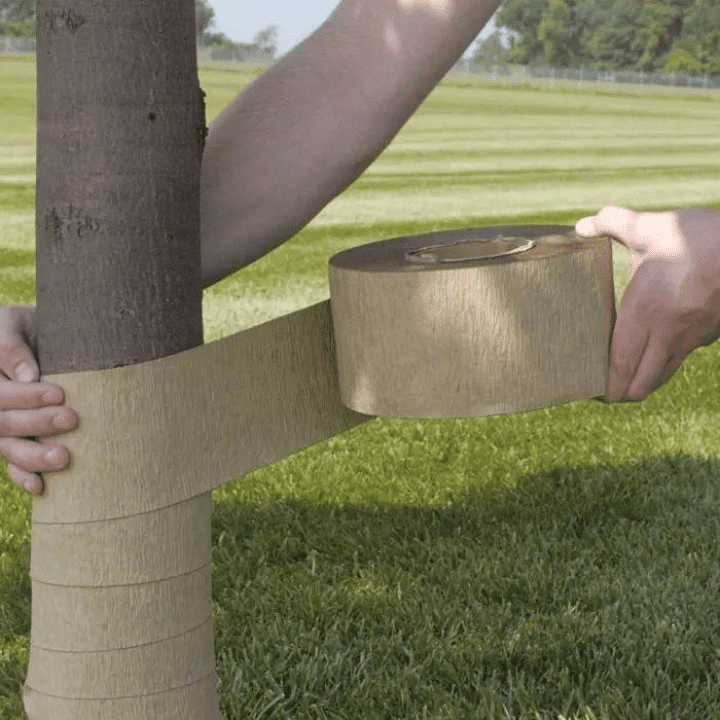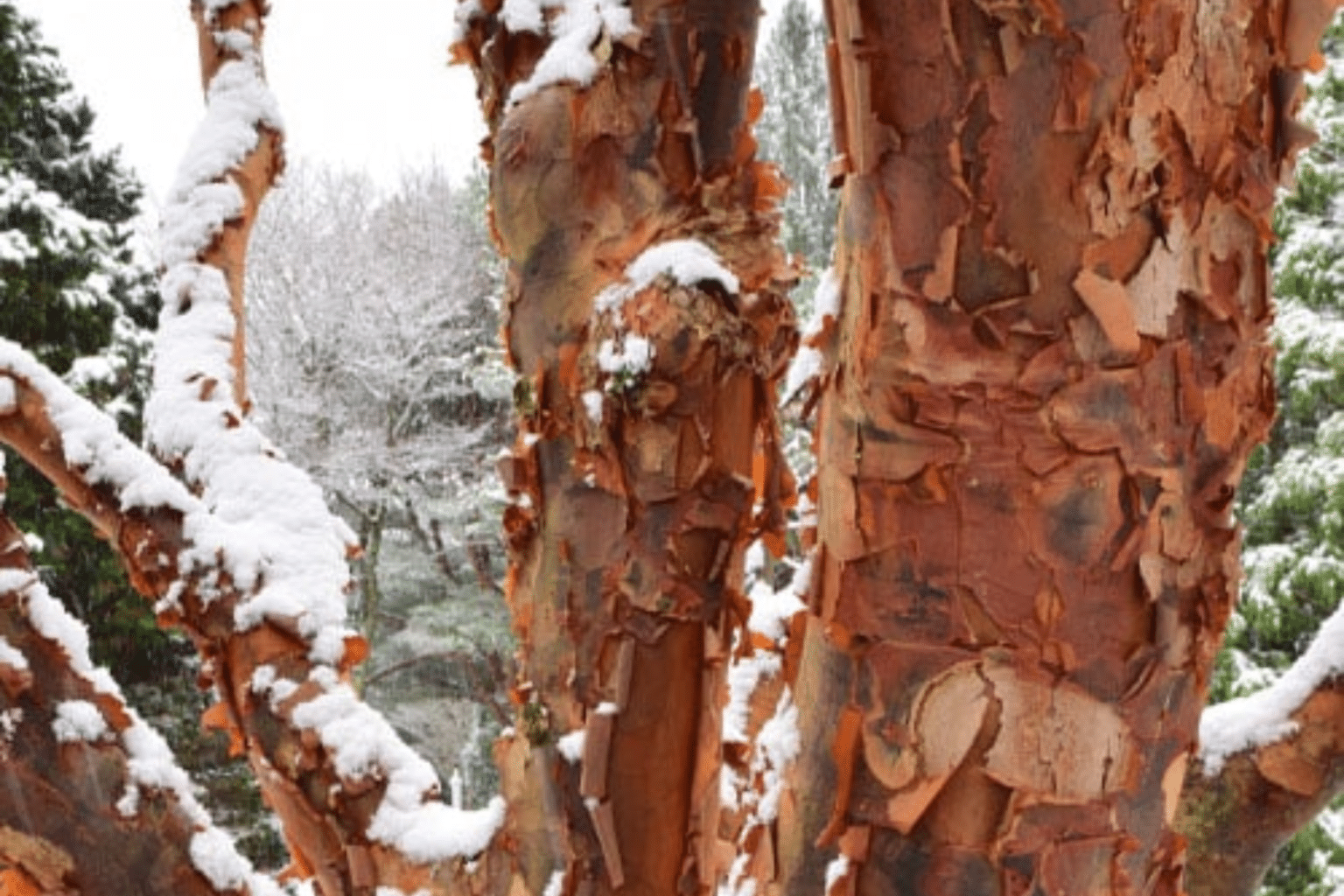Fluctuating winter temperatures play an enormous role in the winter damage that our trees can incur. Knowing what damage can occur will help you protect your newly planted trees.
What is Sunscald?
Winter sunscald can occur when the tree bark warms in the sun and then cools rapidly in the evening. While the cells in the phloem and cambium layers are typically dormant in winter, the sun’s warmth can awaken these cells. These cells then die as the temperature drops drastically in the evening.

Identifying Sunscald Symptoms
Sunscald damage often leaves a sunken appearance in the bark where cell damage has occurred. This is most often found on the south and southwest sides of trees. When extensive tissue areas under the bark are damaged, peeling and cracking can occur, especially during the growing season. Young and thin-barked trees, like birch, crabapple, cherry, maple, linden, and sycamore, are more prone to winter damage.
What are Frost Cracks?
Once again, the sun plays a role in creating frost cracks. As the sun warms the tree, the cells in the bark can expand along with the wood beneath the bark. When the temperatures drop, the bark cools and contracts. Because the wood under the bark does not cool as quickly, it can cause the contracting bark to crack.

Identifying Frost Crack Symptoms
Cracks will appear in the bark, typically on the south and southwest sides of the tree. It is common for old damage to reopen repeatedly in the winter and callus over in the summer. This newly exposed area can leave the tree vulnerable to pests, diseases, and other environmental stressors during the following growing season.

How to Prevent Sunscald and Frost Cracks
Here are a few steps to offer your tree protection in winter.
- Wrap the trunk of the tree in white tree wraps. These will reflect the sunlight and help keep the bark cooler. (Remove before spring so you don’t encourage pests, disease, or damage to the trunk.)
- Use tree wrap on young trees with thin bark.
- Don’t fertilize in the fall. Instead, wait until spring to fertilize.
- Ensure consistent watering during the fall and early winter to maintain the tree’s overall health.
- Mulching will also help keep your tree moist during the winter months.

What to do if Sunscald and Frost Crack Occurs
Don’t panic! Despite our best efforts, trees may still experience winter damage. However, trees are resourceful and can often heal themselves by forming wound wood or callus tissue.
By embracing these practices and fostering a culture of vigilant tree care, we can contribute to the well-being of our trees, ensuring the longevity of our shade-offering companions.



